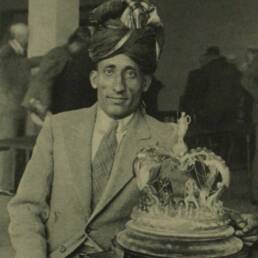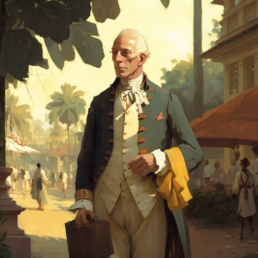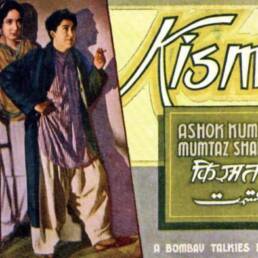Humlog, the iconic Doordarshan TV serial, was a masterclass in storytelling that captured the essence of Indian middle-class life in the 1980s.
However it traces its origin to the most unlikely inspiration: a sewing machine revolution that rocked Peru. Gather around.
Humlog’s strength lay in its ability to portray the everyday struggles and joys of an ordinary family. Each character had their own story arc and contributed to the larger narrative, creating a rich tapestry of interconnected lives and relationships.
The show tackled serious social issues, such as dowry, alcoholism, birth control and gender discrimination. Humlog was a show that wasn’t afraid to take on the tough topics, but with sensitivity and depth. It was truly way ahead of its time.
The show was a pioneer in the Indian TV industry and revolutionized the way Indian audiences consumed TV content by mixing social educational content with entertainment. But we need to go back to the land of the Incas in search of its gripping origin.
Peru, 1969. In a thrilling tale of triumph over adversity, a telenovela Simplemente María caught everybody’s attention. As the brilliant research by Arvind Singhal & Everett Rogers suggests, this humble TV serial at the heart of South America created somewhat a butterfly effect.
It recounts the incredible journey of a single mother named Maria, who left the Andes Mountains for the bright lights of Lima. Despite starting as a lowly maid in a wealthy city household, Maria’s unyielding work ethic made her a shining example of success in the face of hardship.
She even managed to negotiate for some precious free time each evening to attend adult literacy classes. But it was her mastery of the Singer sewing machine that truly set her apart, propelling her up the social ladder and earning her the respect and admiration as a fashion designer.
It was a time when Simplemente Maria ruled the airwaves and had the whole of Peru and Latin America hooked. The ladies of the house were spellbound by the show – a sewing-fever gripped them and in the evenings they all attended literacy classes.
And guess who was quick to grab this golden opportunity? Singer. They swiftly bought advertising time during the show. It was a genius move, as sales of Singer sewing machines skyrocketed, and a flood of young women signed up for sewing classes. A new era begun.
The power of Simplemente Maria was undeniable, and it was clear that this show had the golden touch. A genius theatre director in Mexico noticed the roaring success and decided to create something similar for Mexican television. Thus, ‘Ven Conmigo’ was born.
In the mid-70s, “Ven Conmigo” blasted on to the screens of Mexico, and it was a real game-changer. Thanks to the program, a whopping million folks who were once illiterate signed up for adult education classes. Talk about impact!
The show was such a smash hit that Televisa, the TV network behind it, decided to roll out another educational drama. This one was called “Acompaname,” and it was all about family planning. Did it ever hit the mark? Results were surprising.
Viewers flocked to government clinics by the hundreds of thousands, eager to learn more and take control of their reproductive health. Televisa really outdid themselves this time!
With a stroke of genius, Sabido cooked up a surefire formula for success. As his brainchild gained traction across the planet, it transformed into the mighty Entertainment-Education empire we know today. So much so that Sabido came to India and conducted a 5-day workshop in 1983.
Backed by Sabido’s guidance and with support from PM Indira Gandhi, S.S. Gill, the former secretary of the Ministry of I&B, joined forces with the esteemed scriptwriter Manohar Shyam Joshi, to craft India’s first educational TV drama. And so emerged the legendary Humlog.
The Indian populace would religiously gather in front of their TV screens, come evening, to catch an episode of the ever-popular Humlog. The TV drama even had a ripple effect that led to a surge in eye donations across the country. There was another story worth telling.
Guess who was the key sponsor? It was Maggi. Till then, Maggi’s sales had been somewhat lackluster. The rest, as they say, is history – both Maggi and Hum Log became instant sensations, much like Singer’s soaring popularity in Peru. Déjà vu.
Humlog was much more than just a TV show. It was a window into the soul of India, a reflection of our hopes and struggles. A cultural touchstone that will always hold a special place in our hearts. But we must remember it was the women of Peru who led the way.
Sources:
- Arvind Singhal & Everett Rogers, Humlog Story: from concept to after effects. https://utminers.utep.edu/asinghal/Articles%20and%20Chapters/Singhal%20Rogers%201991%20Hum%20Log.pdf
- Jeff Crider, Adult Literacy, Birth Control, Addressed in Dramas: Third World Soaps Tackle Social Problems, Los Angeles Times, https://www.latimes.com/archives/la-xpm-1987-09-20-mn-8914-story.html
Image sources:
- The cast of ‘ Hum Log’, THE HINDU PHOTO ARCHIVES, https://frontline.thehindu.com/the-nation/india-at-75-epochal-moments-1984-first-tv-soap-hum-log-aired/article65727367.ece
- Simplemente María, filmaffinity.com
- Gentle, Miguel Sabido, CC BY-SA 4.0 by Wikimedia Commons.
- Goto, Singer sewing machine, CC BY-SA3.0 by Wikimedia Commons.
- Maggie • Public domain from Wikimedia commons




